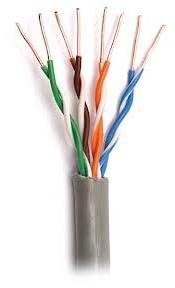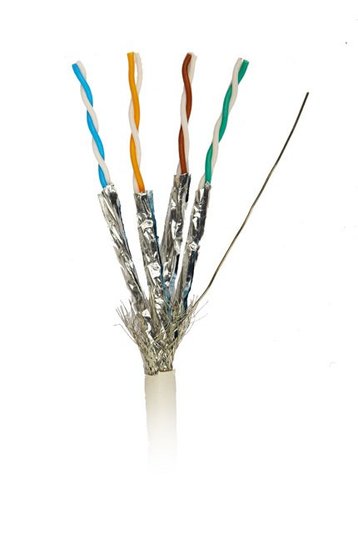Swiss cable maker Reichle & De-Massari is introducing four-pair Power over Ethernet (4P PoE) cables, designed to deliver up to 100W over local data networks, several times the power provided by current standards,
While the IEEE 802.3at-2009 PoE standard allows 25.5W - somewhat less at the delivery end - the new cables will allow more powerful terminal equipment to be powered over the network cables, by using all the pairs for power, something which is allowed in more recent developments to the IEEE PoE standards.
Powering the IoT
The structured cabling systems handle Ethernet data at 10 Gbps ts, while powering IP terminal devices, such as cameras, monitors, wireless access points and point-of-sale terminals. These are supplied with energy via the local data network. The trend for an increased use of Power over Ethernet (PoE) would also support the Internet of Things (IoT). Many small sensors and control systems could be run from remote locations in buildings without additional power cabling.
However, as R&M points out, the twisted-pair copper cables heat up during the supply process, leading to an increase in attenuation. To help planners take this into account, R&M has introduced a PoE calculator, which takes into account all relevant factors, such as cable types and ambient air temperature.
Planners have to avoid thick cable bundles and other factors which might cause heat build-up in cable channels, using larger conductor cross sections and/or shielded cables for longer cabling links, and to reduce the link length where possible. R&M also advises the use of modules and plugs with insulation displacement technology; this technology creates stable connections between the cables and connecting contacts that are similar to soldering joints.
The widely distributed piercing technology penetrates only the insulation of the copper cables and creates a loose contact, which with live connections may in the worst case cause a fire.
Power over Ethernet can also produce small arcs, leading to damaged contacts. If this happens in the contact area of the connection, the transmission properties may be permanently impaired. R&M recommends the use of plug connectors and connection modules that are designed to ensure a sufficient distance between the breaking point and the nominal contact area.


